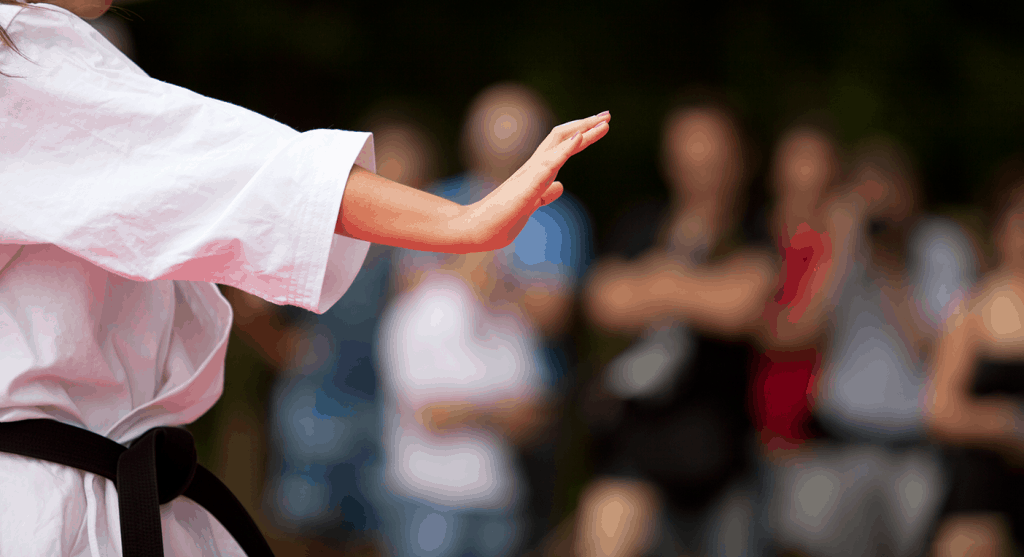By Noel Plaugher
So you can’t pull together 22 kids for a football team, that doesn’t mean your students can’t enjoy a rich sports experience in elementary, middle, junior and high school. Many of Texas’ larger homeschooling communities have formed their own sports leagues. Check with your local homeschool groups to learn what’s available, or explore community sports leagues. Or go it alone with an individual sport. There are many options in the wide world of homeschooling sports.
Read ahead:
Team Sports vs. Individual Sports: Which Is Best for Your Child?
On any given Saturday, sports fields across America are filled with children playing team sports. Exciting soccer, baseball and football games are supported by cheering parents in lawn chairs accompanied by the ubiquitous ice chests. It is safe to say that playing team sports has become a fixture for American kids.
Are team sports the best choice, though? When it comes to choosing a sporting activity for your child, the default choices—although common—may not be the best. What about individual sports?
Some parents have good reasons for choosing team sports. The primary reasons are wanting to instill teamwork as a value and ensure their children get exercise with other children. If the goal is simply to give your child something to do as an activity, then most things will probably fit the bill. However, if you want your child to develop positive traits and learn some life lessons while pursuing an activity your child can grow with and continue through her entire life, consider individual sports.
Why Choose Individual Sports over Team Sports for Your Children?
Some kids thrive in the team environment, but many others feel uncomfortable in an extrovert’s playground. It may seem that the only choices are team sports, but there are actually a lot of great individual sports that can be practiced by children of all ages. And, you likely won’t have to go far to find them.
Here are 24 individual sports that you may or may not have considered—or maybe even heard of:
- Surfing
- Tennis
- Swimming
- Judo
- Karate (martial arts)
- Fencing
- Kendo
- Boxing
- Wrestling
- Table Tennis
- Golf
- Track and Field
- Archery
- Skating
- Cycling
- Powerlifting
- Dance
- Bowling
- Skiing
- Snowboarding
- Backpacking
- Rock Climbing
- Spelunking
- Gymnastics
When it comes to individual sports, there is certainly no lack of variety. So, there is a very good chance that you will find something that will be a great fit for your child.
Explore sports from around the world in this list of 750 sports—from Acroski to Zorkhana.

In addition to a wide range of choices, the one thing that all individual sports have in common is the emphasis on individual achievement. Individual sports teach and instill traits of self-reliance, accountability, self-motivation, resilience and self-confidence.
The first thing that most readers will notice is the amount of “self” oriented traits listed. That is because that is the biggest payoff to individual sports: self-development.
If the goal of a sports activity is to be a teaching tool for your child’s future, in addition to fresh air and a break away from TV and computer screens, then learning positive life lessons early in life is a great reason to choose individual sports.
Participation is the best part of individual sports for children. When you are playing an individual sport your child isn’t going to be riding the bench, and you won’t have to worry about them being overshadowed by another player. When the medal, ribbon or trophy is awarded, your child will be confident in what he was able to accomplish on his own.
Can Team Sports and Individual Sports Co-Exist?
There is the opportunity for the best of both worlds. How? Many individual sports are competitive and provide opportunities for your student to be part of team, which gives your child the benefits of being part of a team, as an individual competitor. For example, a child in martial arts much compete individually, but as part of a dojo team.
As your child goes through life, she will need to study to get through school, get a job, meet a mate, get married, probably buy a house, etc. So far, all of these things require a positively developed individual.
In a job interview, there is only you and your own skills to be successful—you have to cheer yourself on and call your own plays. Sometimes in life there is not a team backing you—no one to pass you the ball. You just have to do it on your own.
I believe that individual sports are better suited than team sports to prepare your child for all of life’s challenges, pitfalls and successes that lie ahead.
Start by finding out what individual sports are available in your area, or which sports you might be able to practice on your own at home with YouTube tutorials.
Expose your child to the different sports by trying them, observing them in action—live or on television, and learning more about them from the local library or Internet research.
Try a few. Many sports locations will offer a free trial week, with no equipment purchases required. Or try the “lite” versions of the sports, like miniature golf, gymnastics at a trampoline venue, caving and rock climbing at a state park.
When your child shows some genuine enjoyment of the sport, take the next step. Don’t get discouraged if your child tries something and gives up on it after a few months. It may take a few tries to find that sport that will become an integral part of your child’s healthy routine and self-development.
***
Noel is a violent crime survivor, martial artist and author of the
book “Standing Qigong for Health and Martial Arts – Zhan Zhuang” published by Singing Dragon. Noel lives in Atlanta, where he teaches and writes about martial arts, Qigong and personal development. Visit him on Facebook.
9 Alternatives to Sports
By Sarah Lyons
Team sports are a great way to keep kids active, but not all kids enjoy playing sports. Home school parents, when your students are not interested in team sports, look for other ways they can continue to be healthy and active. Here are nine ways to get your kids moving around when they are not part of a sports team.
1. Encourage Lifelong Activities
Choose activities that have potential for lifelong enjoyment such as biking, swimming, walking and hiking. These activities are great because they can be enjoyed individually or as a family. From the family perspective, encourage everyone to go on a walk or bike ride together, hike in a local park, or spend the day at the pool. Also, get a step counter for each family member. This will create a friendly competition to see who can get the most steps.
2. Go Outside
Getting your kids outside is a great way to sneak in exercise. Visit a local park, play tag, use a swing, or encourage them to climb trees. Or, stay at home. Have your child go on a “treasure hunt” in your backyard and collect items that interest them like sticks, rocks, flowers or leaves. Seasonal outdoor activities such as catching fireflies in the summer, building a snowman in the winter, or raking leaves in the fall helps kids remain active while not playing a sport.
3. Place Limits on Screen Time
When screen time is allowed, encourage your child to move while watching television.
- If a song comes on, get up and dance or march along.
- When your child plays video games, encourage them to pick games that involve movement.
- If your child is sedentary while enjoying screen time, ask them to complete an activity like chores or outdoor play before turning on the television or tablet.
4. Homeschool Parents, Set an Example
Children learn by example. If you have a low activity level, your child will most likely see exercise as a low priority. Lead by example by moving. Begin an exercise routine or a hobby that includes movement, like gardening, and invite your child to join you. Most importantly, make the most of the time together.
5. Dance and Theater
Turn on music and start a family dance party! There is nothing like a great song to get the body moving for impromptu exercise. Some children may also enjoy trying dance classes, baton twirling or cheerleading. All of these are a great source of exercise. If your child is drawn to music and theater, get them involved in a theater production in school or your community.
6. Find a New Hobby
Encourage your child to find a hobby that encourages movement and activity such as skateboarding, fishing, bowling and woodworking. If your child is doing something they enjoy they won’t even notice they are also exercising.
7. Go Play!
Leisure sports is a great replacement for kids who do not care for the competitive nature of team sports. Therefore, there is less pressure to perform at a higher level. Encouraging kids to play leisurely, like the NFL’s “Play 60” initiative, gets them active. Playing frisbee, shooting hoops, or enjoying frisbee golf, tag, catch, and duck duck goose all require kids to run around. They will have so much fun they will not notice they are exercising.
8. Chores — Yes, Chores!
Chores are a great way to get kids active while simultaneously teaching them the value of hard work. Ask your child to clean their room, vacuum, mow the lawn or sweep. To get them more motivated, consider paying them an allowance.
9. Pat your tummy while rubbing your head
Don’t neglect the development of physical coordination and eye-hand coordination. Lots of fun pastimes can improve these skills, such as cup stacking, playing jacks, setting up dominoes to topple, sewing, jewelry making, finger painting, juggling, tetherball, hacky sack, stacking Lincoln logs and building blocks, building just about anything, including sand castles, playing Simon Says, handwriting, or even trying to catch flies or falling leaves.
***
Sarah Lyons is a freelance writer and stay at home mom to six kids, including 2-year-old triplets.
It Took Three Years to Find the Right Martial Arts Class for My Child
By Donna Schillinger
Finding the right sport for your student can be a process. We were a soccer family; our daughter played for eight years. So it was a surprise to us that our son literally sat down in the field and picked dandelions as the rest of the team followed the ball past him. Despite much coaching from the sidelines, we could not get him to care about losing or winning in soccer.
Martial arts, however, was clearly a different story. Inspired by Power Rangers, my son was desperate to join a martial arts class from the age of three. He counted down the days until his fourth birthday, when he would be eligible to start instruction. He was so excited to get the uniform and start classes, but as he neared the one-year mark, his enthusiasm waned.
After taking a year off from the sport, he again expressed interest. Back to the dojo! A new teacher was there and my son loved his style. But mom didn’t love the dojo’s new management style—including a hefty rate hike and many new ways to market add-ons to the kids. After a $1500-year in sports, mom decided it was time to find a new dojo.
Research ensued and we tried several new places, taking advantage of “one-week free” offers for new students. Finally we settled on a new Korean martial arts dojo with a husband-and-wife leadership team. My son wasn’t thrilled at having to start again with a white belt, but this new art was different enough from the other that he soon realized the importance of starting from scratch.
After a couple of months of waiting on my son during the hour-long lessons, my husband decided he wanted to give the sport a try. Now it’s something they can do together, including practicing at home and going to tournaments. My son is soon testing for a brown belt and my husband also has a red belt. It’s a lot of fun and subject of much rubbing that son outranks dad on the mat.
My message to other homeschooling parents is simply to be patient. Try another sport if he seems uninspired. If she seems to burn out on a sport that she once loved, maybe she just needs a break, or a new instructor. Even though we’re happy at our current dojo and hope our son sticks with it, we’re prepared to keep experimenting. The benefits are too great for us to give up on finding a sport he can grow old with.
***
Donna Schillinger homeschooled her two children for 11 years. She is president of the Micah 6:8 Initiative in Rogers, Ark., which addresses food and housing insecurity in Northwest Arkansas.


